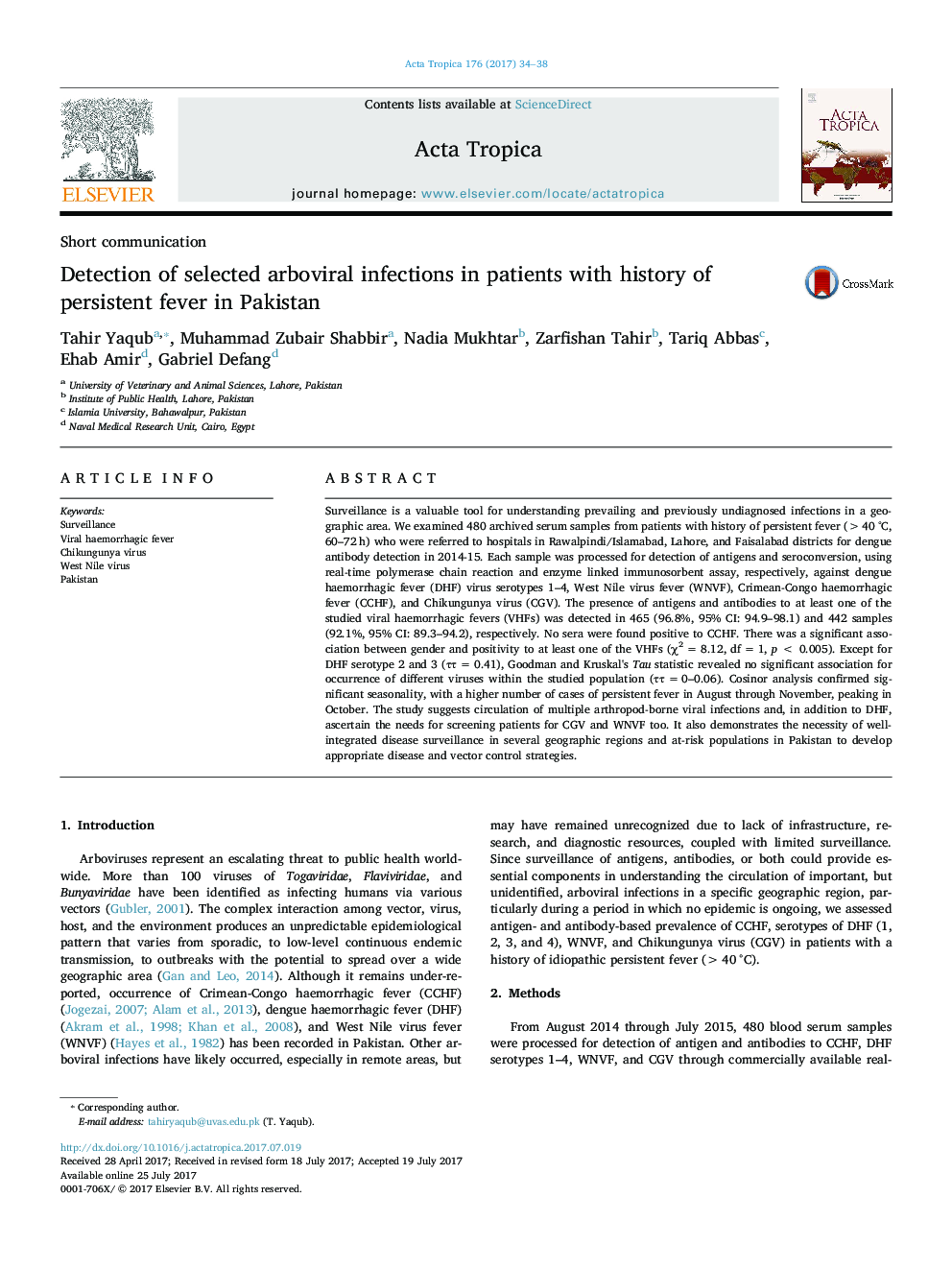| کد مقاله | کد نشریه | سال انتشار | مقاله انگلیسی | نسخه تمام متن |
|---|---|---|---|---|
| 5671058 | 1592748 | 2017 | 5 صفحه PDF | دانلود رایگان |
Surveillance is a valuable tool for understanding prevailing and previously undiagnosed infections in a geographic area. We examined 480 archived serum samples from patients with history of persistent fever (>40 °C, 60-72 h) who were referred to hospitals in Rawalpindi/Islamabad, Lahore, and Faisalabad districts for dengue antibody detection in 2014-15. Each sample was processed for detection of antigens and seroconversion, using real-time polymerase chain reaction and enzyme linked immunosorbent assay, respectively, against dengue haemorrhagic fever (DHF) virus serotypes 1-4, West Nile virus fever (WNVF), Crimean-Congo haemorrhagic fever (CCHF), and Chikungunya virus (CGV). The presence of antigens and antibodies to at least one of the studied viral haemorrhagic fevers (VHFs) was detected in 465 (96.8%, 95% CI: 94.9-98.1) and 442 samples (92.1%, 95% CI: 89.3-94.2), respectively. No sera were found positive to CCHF. There was a significant association between gender and positivity to at least one of the VHFs (Ï2 = 8.12, df = 1, p < 0.005). Except for DHF serotype 2 and 3 (ÏÏ = 0.41), Goodman and Kruskal's Tau statistic revealed no significant association for occurrence of different viruses within the studied population (ÏÏ = 0-0.06). Cosinor analysis confirmed significant seasonality, with a higher number of cases of persistent fever in August through November, peaking in October. The study suggests circulation of multiple arthropod-borne viral infections and, in addition to DHF, ascertain the needs for screening patients for CGV and WNVF too. It also demonstrates the necessity of well-integrated disease surveillance in several geographic regions and at-risk populations in Pakistan to develop appropriate disease and vector control strategies.
Journal: Acta Tropica - Volume 176, December 2017, Pages 34-38
